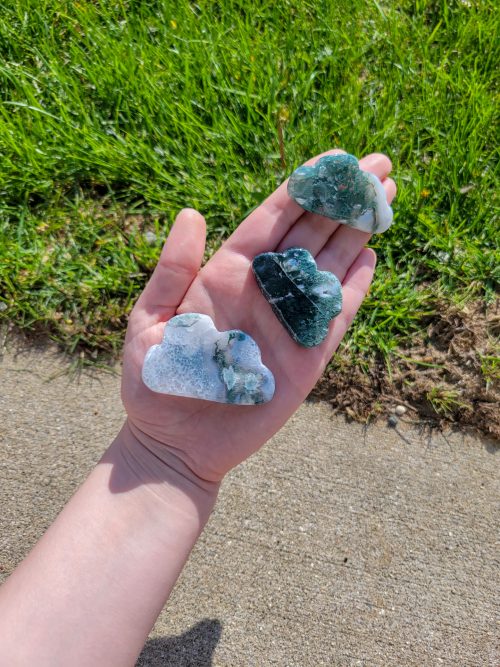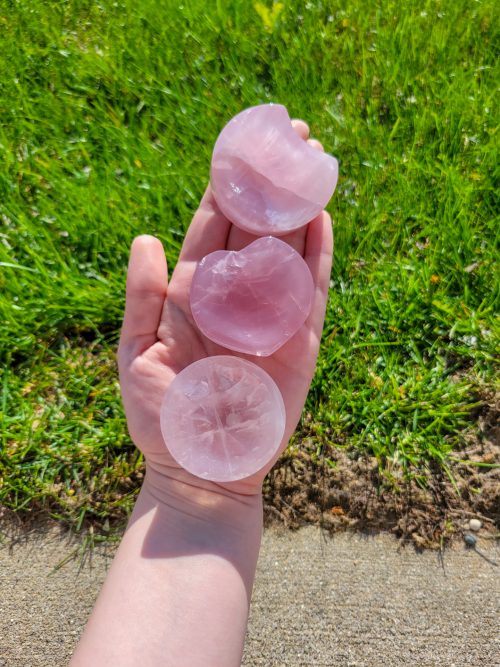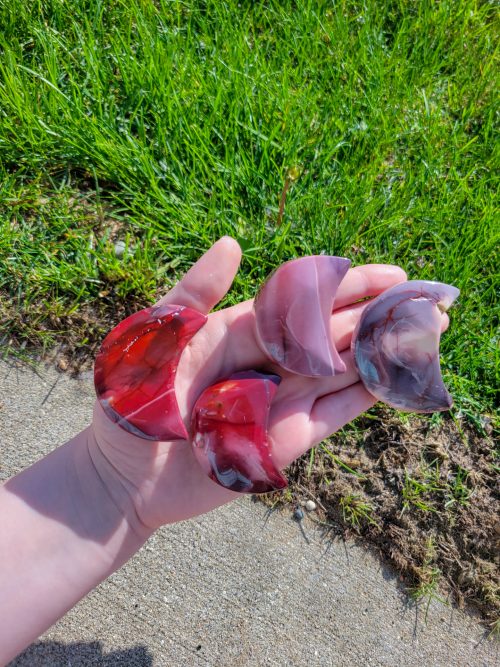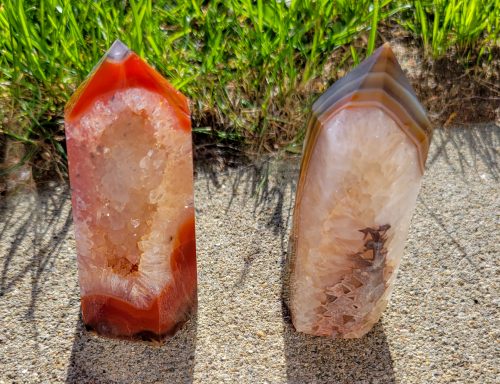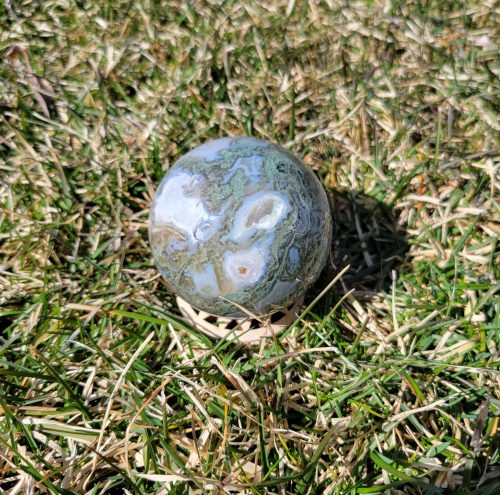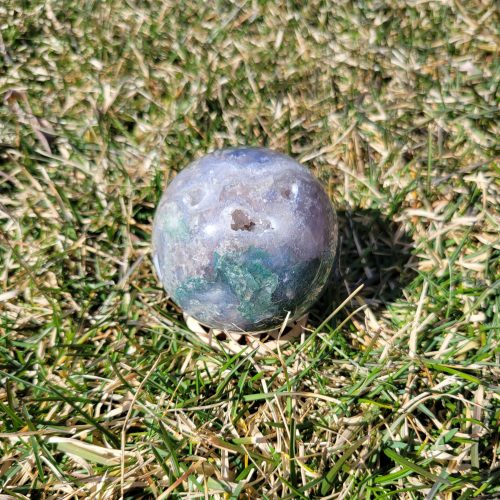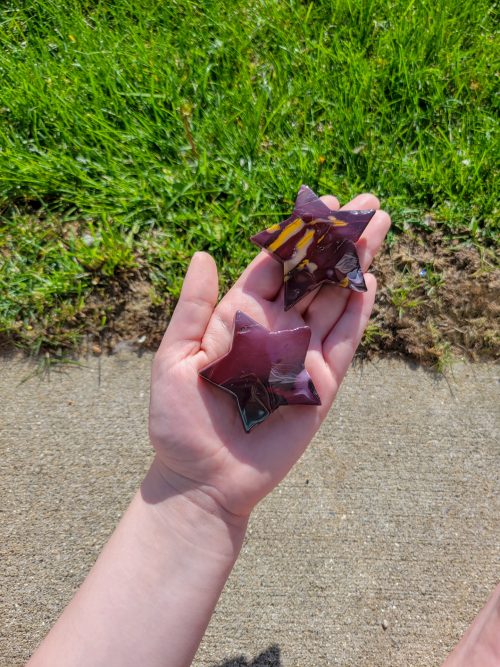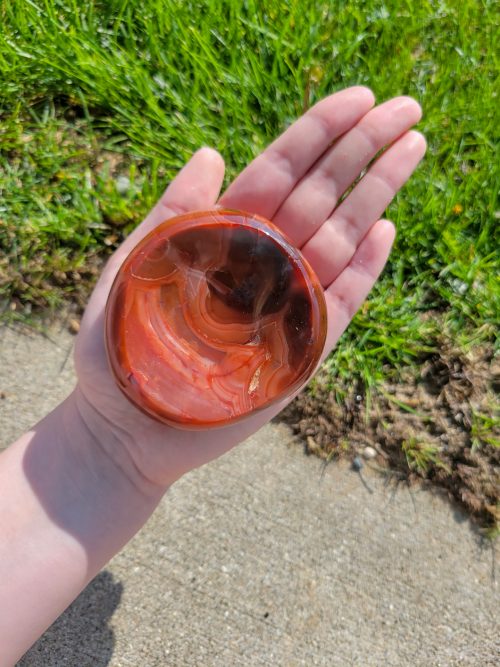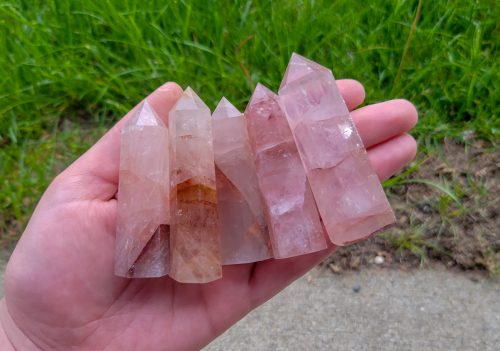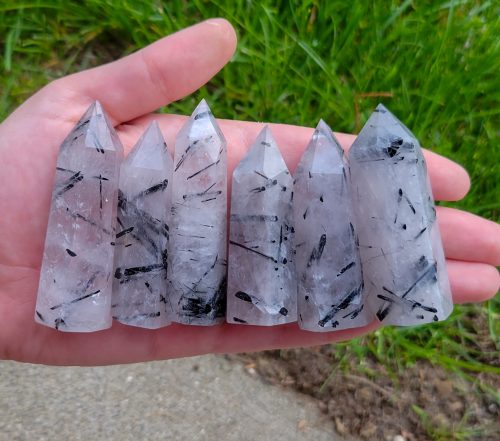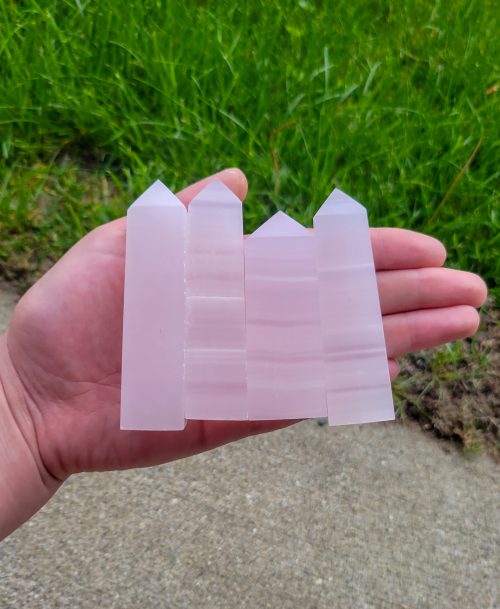-
6cm Wide Moss agate is a semi-precious stone. It is a variety of Chalcedony and it formed from silicon dioxide. The field of this stone is a milky white or clear quartz with blue and green inclusions that form as a result of oxides in the mineral. The dendritic inclusions are mainly made from manganese or iron that grow into patterns to give it the moss look. ***Due to natural variations in stones, the appearance will vary***
-
5cm Wide Rose Quartz is an anhedral crystal. It is found in the cores of pegmatites and gets its color from microscopic inclusions of a pink variety of the mineral dumortierite . Rose Quartz is naturally a pink hue but can have more hues of grey/purple or red. This mineral Earth's can be found in many places including South Africa, Madagascar, and Brazil. ***Due to natural variations in stones, the appearance will vary***
-
5.5cm Wide Moss agate is a semi-precious stone. It is a variety of Chalcedony and it formed from silicon dioxide. The field of this stone is a milky white or clear quartz with blue and green inclusions that form as a result of oxides in the mineral. The dendritic inclusions are mainly made from manganese or iron that grow into patterns to give it the moss look. ***Due to natural variations in stones, the appearance will vary***
-
60mm Wide Moss agate is a semi-precious stone. It is a variety of Chalcedony and it formed from silicon dioxide. The field of this stone is a milky white or clear quartz with blue and green inclusions that form as a result of oxides in the mineral. The dendritic inclusions are mainly made from manganese or iron that grow into patterns to give it the moss look. ***Due to natural variations in stones, the appearance will vary***
-
65mm Wide Moss agate is a semi-precious stone. It is a variety of Chalcedony and it formed from silicon dioxide. The field of this stone is a milky white or clear quartz with blue and green inclusions that form as a result of oxides in the mineral. The dendritic inclusions are mainly made from manganese or iron that grow into patterns to give it the moss look. ***Due to natural variations in stones, the appearance will vary***
-
8cm Wide Carnelian is a part of the Chalcedony family. It is formed when two silica minerals with different crystal structures grow together such as quartz and moganite. The fiery orange and red colors come from iron oxides in the mineral. Carnelian can be found in Brazil, India, and Uruguay. ***Due to natural variations in stones, the appearance will vary***
-
6.5cm - 7.5cm Tall Fire Quartz- also known as Hematoid Quartz- is clear quartz crystals with iron deposits it them. The color can range from a pale pink to a dark rust color. The formations can form in two different ways; where the hematite forms on the inside as the crystal quartz forms its shape around it. The other way is where the hematite forms on top of an already formed crystal. These beautiful crystals, originally found in Brazil, can also be found in other countries such as Switzerland, Germany, and the United States. ***Due to natural variations in stones, the appearance will vary***
-
6.5cm Tall Clear quartz is made of Silicon dioxide and is one of Earth's hardest minerals on the Moh's hardness scale. It is found mixed in many types of minerals and also in bedrock, sand, and gravel. Quartz is naturally clear and opaque but can be found in many other colors. This mineral Earth's most abundant crystal and can be found in many different places but mostly in the Alps, Madagascar, and Brazil. ***Due to natural variations in stones, the appearance will vary***
-
7.5cm - 8cm Tall Calcite is a mineral when originally formed is colorless and opaque and can come in many different forms of translucency. It gets its beautiful colors and banding from impurities in the rocks the specimen is formed in. Calcite gets its name from the water within the mineral being rich in calcium. This soft mineral can be found all over the world; mainly in shallow marine settings such as hydrothermal veins and hot spring deposits. Many marine life species, such as crabs and coral, rely on calcite to form their shells. ***Due to natural variations in stones, the appearance will vary***

